Moises JH Tono Lopez Tradition “Rosca” “Reyes Magos” Mexico
The Tradition of the “Rosca” and “Reyes Magos” in Mexico
The Tradition of the “Rosca” and “Reyes Magos” in Mexico
Text & Translation By Moises Jimenez & Antonio Lopez
Mexico, a country full of color, traditions and festivities, finds in the celebration of “Día de Reyes Magos” one of its most emblematic expressions. This festival, which has its roots in the Catholic religion and is intertwined with native customs, stands out for the presence of the “Rosca de Reyes”, a sweet bread that symbolizes the arrival of the three “Reyes Magos” at the manger of Jesus.
“Noche de Reyes” and the Hope of Children
The celebration begins on the eve of January 6, known as “Noche de Reyes. On this day, January 5, Mexican children express their wishes and dreams through letters that they deliver to the Three “Reyes Magos”: Melchior, Gaspar and Baltasar. The excitement takes over the little ones, who wait expectantly for the arrival of the Three Kings so that, on the morning of January 6, they will find their gifts and surprises.
The Parade: A Parade of Tradition and Joy
In various cities and communities in Mexico, the Three Kings Parade is a joyful and colorful event that brings together entire families. Participants dressed as the three wise men walk the streets in a parade filled with music, dancing and the distribution of sweets and toys. This event not only celebrates the visit of the Three “Reyes Magos”, but also strengthens the sense of community and connection between generations.
The Rosca de Reyes: A Shared Bond
The Three “Rosca de Reyes Magos” is the culinary symbol par excellence of this festivity. This circular bread, decorated with candied fruits and sugar, is shared with family or friends on “Noche de Reyes”. But the thread is not just a delicious delicacy; It hides small figurines inside, representing the Child Jesus, as well as other objects.
Tradition dictates that those diners who find a figurine in their portion of the bagel will assume the role of godfather or godmother of the Baby Jesus. This honor involves the responsibility of organizing the Candelaria Day festival, which takes place on February 2. Although other typical dishes are currently chosen. Thus, the thread is not only a delight for the palate, but also a way to connect the community through shared responsibilities.
Shoes in the Window: A Touch of Mischief and Kindness
A curious tradition is added to the celebration of “Reyes Magos” Day in some places in Mexico. The children prepare their shoes, clean them and place them in the window in the hope that the Three “Reyes Magos” will leave gifts inside them. This gesture, loaded with emotion and expectation, is associated with the belief that the Kings reward children who have behaved well during the year.
However, there is a fun twist to this custom. Children who have had less exemplary behavior might wake up to the surprise of finding a piece of coal instead of gifts. Although this charcoal is often symbolic and edible, it serves as a playful reminder of the importance of kindness.
The “Rosca de Reyes Magos” in the Offices: A Work Bond and the Taste of Butter.
Breaking the “Rosca de Reyes Magos” is a Mexican tradition that transcends homes and enters the workplace. Many Mexican companies dedicate special time to coexistence with co-workers during the “Rosca de Reyes” season. At these meetings, there is always someone who cuts a very small piece so as not to have to buy tamales on Candelaria Day, or who prefers to hide the doll in their mouth so as not to commit themselves.
The “Rosca de Reyes” bread is distinguished by a great butter flavor, with the decoration that over time has gone from dried fruit to ate, cherries, sugar, nuts, and even chocolate. According to tradition, this decoration is the representation of the jewels in the crowns of the “Reyes Magos”. And currently you can find “Rosca de Reyes” in different flavors: from traditional ones, based on butter, to those filled with cream, cheese, or jams.
The tradition came to Mexico from the Spanish after the conquest. It is popularly said that, when the tradition began, these figures were not dolls, but raw beans or beans. Today bakeries generally include plastic dolls inside the kings’ threads, and some still make an effort to put hand-decorated porcelain figures.
The “Rosca de Reyes” season begins days before January 6, and they can already be seen in all the bakeries, supermarkets, restaurants or dining rooms in the country. Enjoy this tradition with your co-workers and family and accompany a piece of thread with a cup of hot chocolate or coffee.
Candelaria Day: Celebrating Commitments and Blessings
On February 2, Candelaria Day marks the next chapter in the tradition of the “Reyes Magos” in Mexico. Those who found the figurines in the thread usually invite family and friends to a special meal, where tamales, atole and other traditional dishes are served. This celebration symbolizes the presentation of Jesus in the temple and the purification of the Virgin Mary, events that Catholic tradition commemorates on this day.
The godfather or godmother of the Child Jesus, designated by the “Rosca de Reyes”, takes the initiative in organizing this celebration, which becomes an occasion to strengthen family and community ties. Food, music and joy are essential elements of this festival, which reflects the cultural richness and religious devotion present in Mexican society.
La Tradición de la Rosca y el Día de Reyes en México
Texto & Traducción Por Moises Jimenez & Antonio Lopez
México, país lleno de color, tradiciones y festividades, encuentra en la celebración del “Día de Reyes” una de sus expresiones más emblemáticas. Esta festividad, que tiene sus raíces en la religión católica y se entrelaza con costumbres autóctonas, destaca por la presencia de la rosca de Reyes, un pan dulce que simboliza la llegada de los tres Reyes Magos al pesebre de Jesús.
La Noche de Reyes y la Esperanza de los Niños
La celebración comienza en la víspera del 6 de enero, conocida como la “Noche de Reyes” o “Nochebuena”. En este día, 5 de enero, los niños mexicanos expresan sus deseos y sueños a través de cartas que entregan a los Reyes Magos: Melchor, Gaspar y Baltasar. La ilusión se apodera de los pequeños, quienes aguardan con expectación la llegada de los Reyes para que, en la mañana del 6 de enero, encuentren sus regalos y sorpresas.
La Cabalgata: Un Desfile de Tradición y Alegría
En diversas ciudades y comunidades de México, la Cabalgata de los Reyes Magos es una manifestación alegre y colorida que congrega a familias enteras. Participantes vestidos como los tres sabios recorren las calles en un desfile lleno de música, bailes y la distribución de dulces y juguetes. Esta evento no solo celebra la visita de los Reyes Magos, sino que también fortalece el sentido de comunidad y la conexión entre generaciones.
La Rosca de Reyes: Un Vínculo Compartido
La rosca de Reyes es el símbolo culinario por excelencia de esta festividad. Este pan circular, decorado con frutas confitadas y azúcar, es compartido en familia o entre amigos en la Noche de Reyes. Pero la rosca no es solo un delicioso manjar; esconde en su interior pequeñas figuritas, representando al Niño Jesús, así como otros objetos.
La tradición dicta que aquellos comensales que encuentren una figurita en su porción de rosca asumirán el papel de padrino o madrina del Niño Jesús. Este honor implica la responsabilidad de organizar la festividad del Día de la Candelaria, que tiene lugar el 2 de febrero. Aunque actualmente se eligen otros platillos típicos. Así, la rosca no solo es un deleite para el paladar, sino también una forma de conectar a la comunidad a través de responsabilidades compartidas.
Los Zapatos en la Ventana: Un Toque de Travesura y Bondad
Una tradición curiosa se suma a la celebración del Día de Reyes en algunos lugares de México. Los niños preparan sus zapatos, los limpian y los colocan en la ventana con la esperanza de que los Reyes Magos dejen regalos dentro de ellos. Este gesto, cargado de emoción y expectativa, se asocia a la creencia de que los Reyes recompensan a los niños que se han portado bien durante el año.
Sin embargo, existe un giro divertido en esta costumbre. Los niños que han tenido comportamientos menos ejemplares podrían despertar con la sorpresa de encontrar un pedazo de carbón en lugar de regalos. Aunque este carbón suele ser simbólico y comestible, sirve como recordatorio lúdico de la importancia de la bondad y la amabilidad.
El Pan de la Rosca en las Oficinas: Un Vínculo Laboral y Sabor a Mantequilla.
Partir la rosca de Reyes es una tradición mexicana que trasciende los hogares y se adentra en el ámbito laboral. Muchas empresas mexicanas dedican un tiempo especial de convivencia con los compañeros de trabajo durante la temporada de roscas. En estas reuniones, nunca falta quien corta un pedazo muy pequeño para no tener que comprar los tamales el día de la Candelaria, o quien prefiere ocultar el muñeco en la boca con tal de no comprometerse.
El pan de la rosca se distingue por un gran sabor a mantequilla, con el decorado que con el tiempo ha pasado de fruta a seca a ate, cerezas, azúcar, nueces, y hasta chocolate. Según la tradición, esta decoración es la representación de las joyas en las coronas de los reyes magos. Y actualmente se pueden encontrar roscas en diferentes sabores: desde las tradicionales, a base de mantequilla, hasta aquellas rellenas de nata, queso, o mermeladas.
La tradición llegó a México de la mano de los españoles tras la conquista. Popularmente se dice que, cuando la tradición inició, estas figuras no eran muñecos, sino habas o frijoles crudos. Hoy las panaderías generalmente incluyen muñecos de plástico dentro de las roscas de reyes, y algunas todavía se esmeran por poner figuras de porcelana decoradas a mano.
La temporada de roscas comienza días antes del 6 de enero, y ya se pueden ver en todas las panaderías, restaurantes o comedores del país. Disfruta de esta tradición con tus compañeros de trabajo y familiares y acompaña un pedazo de rosca con una taza de chocolate caliente o café.
El Día de la Candelaria: Celebrando Compromisos y Bendiciones
El 2 de febrero, el Día de la Candelaria marca el siguiente capítulo en la tradición de los Reyes Magos en México. Aquellos que encontraron las figuritas en la rosca suelen invitar a familiares y amigos a una comida especial, donde se sirven tamales, atole y otros platillos tradicionales. Esta celebración simboliza la presentación de Jesús en el templo y la purificación de la Virgen María, eventos que la tradición católica conmemora en este día.
El padrino o madrina del Niño Jesús, designado por la rosca de Reyes, toma la iniciativa en la organización de esta celebración, que se convierte en una ocasión para estrechar lazos familiares y comunitarios. La comida, la música y la alegría son elementos esenciales de esta festividad, que refleja la riqueza cultural y la devoción religiosa presentes en la sociedad mexicana.
______________________________
Una ex yanqui de Connecticut quien llama hogar a Cozumel desde hace más de 15 años. Laura escapó al Caribe hace años, desplazándose de una isla a otra dando clases de BUCEO. Se dedicó a perder el tiempo en Jamaica y finalmente se detuvo en Cozumel para pasar unas vacaciones de 2 semanas que aún no terminan. Convenciendo a sus padres que pagaran una elegante universidad privada, obtuvo su título en Periodismo y Laura crea semanalmente Cozumel 4You, medios sociales y artículos promocionales sobre la Isla y también es moderadora en el grupo Cozumel 4 You en Facebook que actualmente cuenta con 25,000 miembros. Fabián, s umuy tolerante marido, desde hace mucho tiempo se resignó a no tener vida privada, pues se ha visto implicado en los diversos proyectos y planes que urde Laura. Son orgullosos padres de diversos perros y gatos rescatados. Mientras contempla su paso a través de la vida en el Caribe mexicano,Laura continúa siendo la pesadilla en la existencia de su muy tradicional suegra mexicana.
- Christmas Mexico Monica Sauza - December 18, 2025
- Cozumel 4 You NEWS December 19, 2025 - December 18, 2025
- San Miguel Cozumel Celebrates 176 Years - December 12, 2025
An ex-Connecticut Yankee who has called Cozumel home for over 18 years, Laura ran away to the Caribbean years ago, bumped around the islands teaching SCUBA diving, lost some time in Jamaica, and finally stopped in Cozumel for a 2 week vacation that hasn’t ended yet. With a degree in Journalism from a fancy private college she convinced her parents to pay for, Laura writes, edits, and creates the weekly Cozumel 4 You news, social media, and promotional articles about the island, as well as moderates the Cozumel 4 You Facebook group, which currently has over 25,000 members. Her long suffering husband, Fabian, has long since resigned himself to having zero private life, as he’s been involved in her various schemes and plots since his arrival. Proud parents to a variety of rescue dogs and cats, Laura continues to be the bane of her traditional Mexican mother-in-law’s existence, as she muses her way through life in the Mexican Caribbean. ______________________________ Una ex yanqui de Connecticut quien llama hogar a Cozumel desde hace más de 15 años. Laura escapó al Caribe hace años, desplazándose de una isla a otra dando clases de BUCEO. Se dedicó a perder el tiempo en Jamaica y finalmente se detuvo en Cozumel para pasar unas vacaciones de 2 semanas que aún no terminan. Convenciendo a sus padres que pagaran una elegante universidad privada, obtuvo su título en Periodismo y Laura crea semanalmente Cozumel 4You, medios sociales y artículos promocionales sobre la Isla y también es moderadora en el grupo Cozumel 4 You en Facebook que actualmente cuenta con 25,000 miembros. Fabián, s umuy tolerante marido, desde hace mucho tiempo se resignó a no tener vida privada, pues se ha visto implicado en los diversos proyectos y planes que urde Laura. Son orgullosos padres de diversos perros y gatos rescatados. Mientras contempla su paso a través de la vida en el Caribe mexicano, Laura continúa siendo la pesadilla en la existencia de su muy tradicional suegra mexicana.
Cozumel Beach Fishing Tournament
3rd Beach Fishing Tournament in Cozumel: A Complete Guide to Rules, Conservation,...
ByLaura WilkinsonJanuary 4, 2024Cozumel Ironman 2025
Over 2,000 Athletes From 81 Countries Rocked Cozumel’s Full Ironman Event! Cozumel...
ByLaura WilkinsonJanuary 4, 2024Cozumel Sailing
How We Came to Call Cozumel Home: Dan Libbert, owner of Cozumel...
ByLaura WilkinsonJanuary 4, 2024Animals Pets Day of the Dead
Animals and pets on the Day of the Dead From the countless...
ByLaura WilkinsonJanuary 4, 2024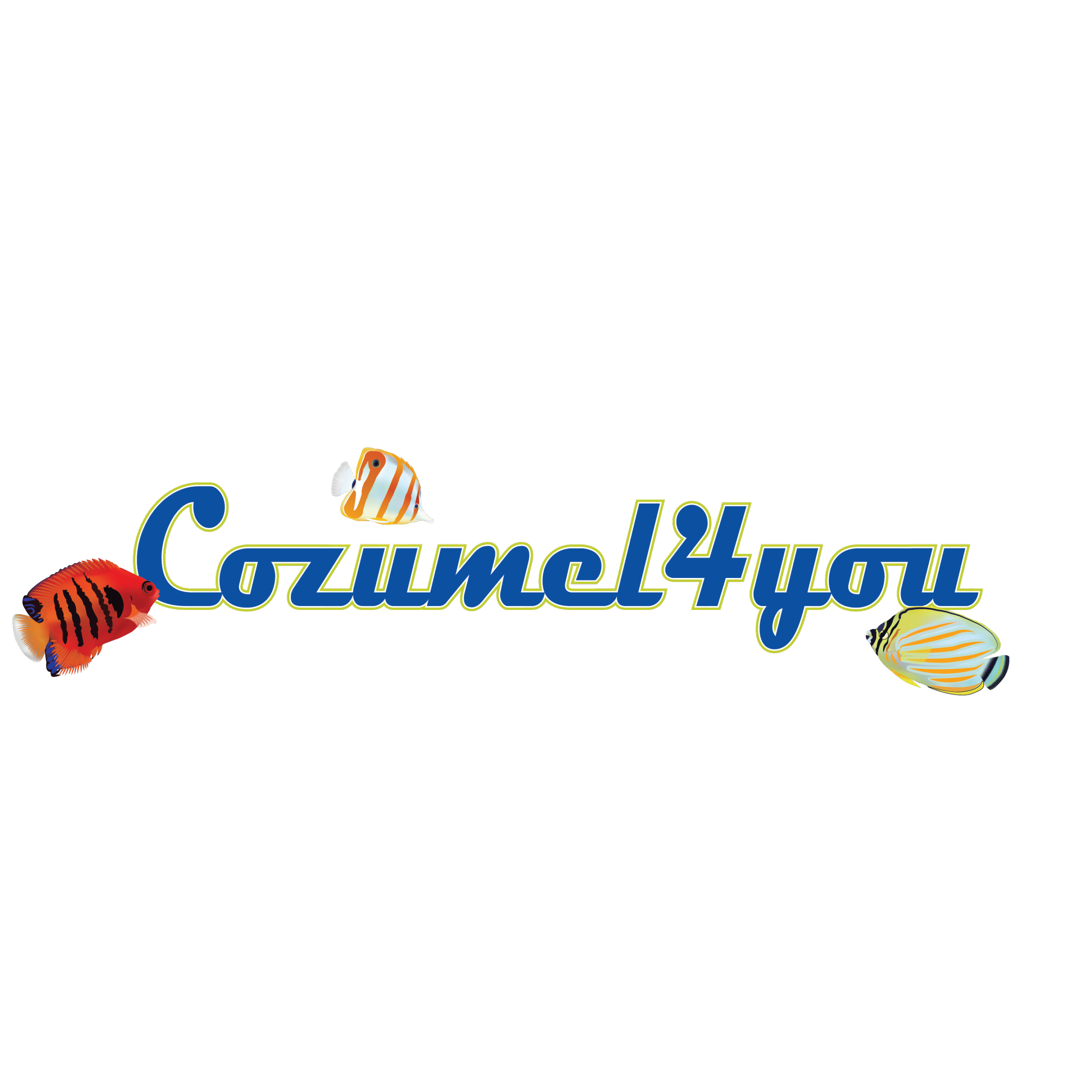

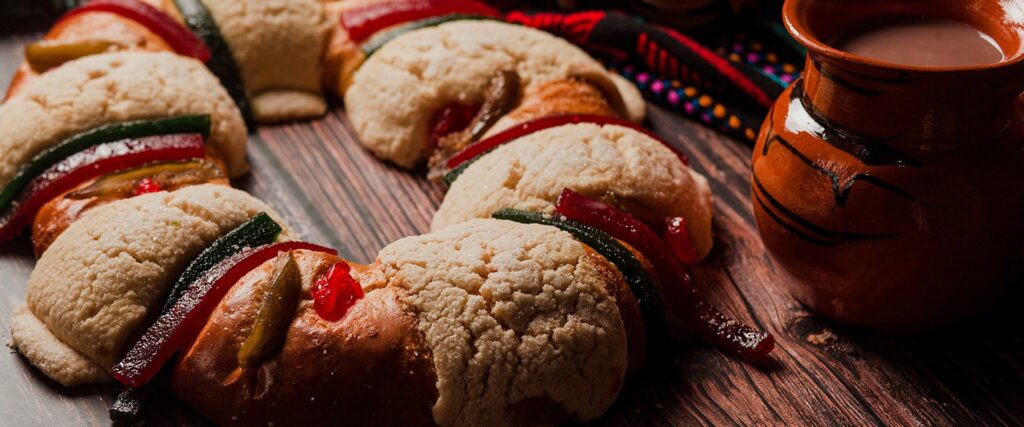





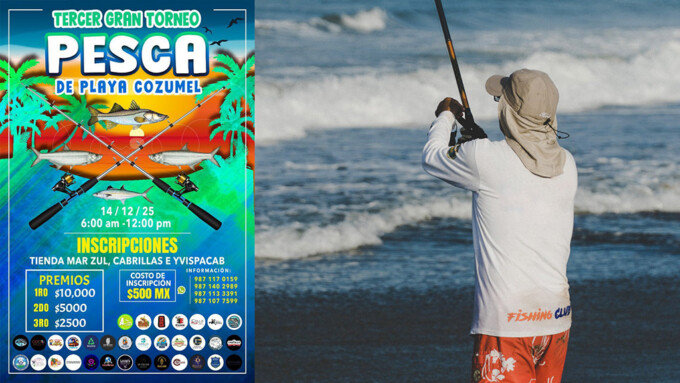


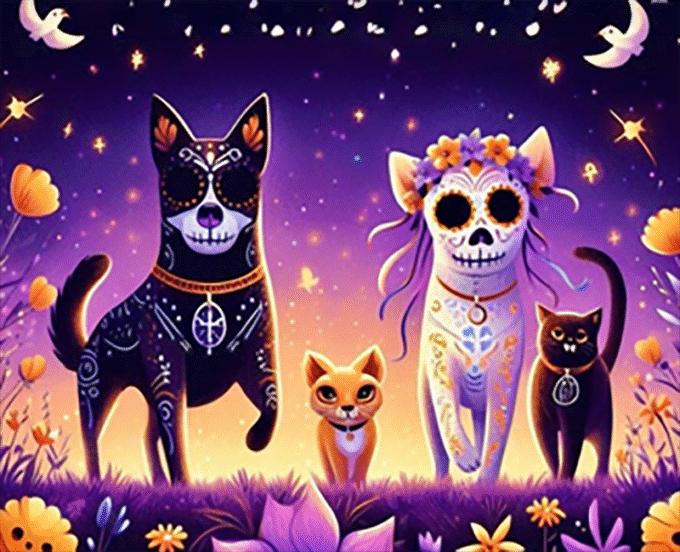

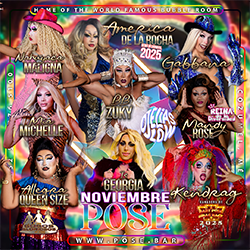
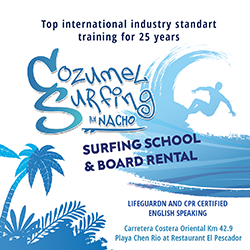



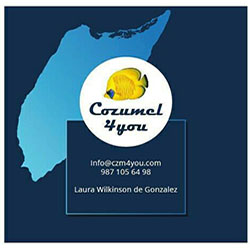

Leave a comment